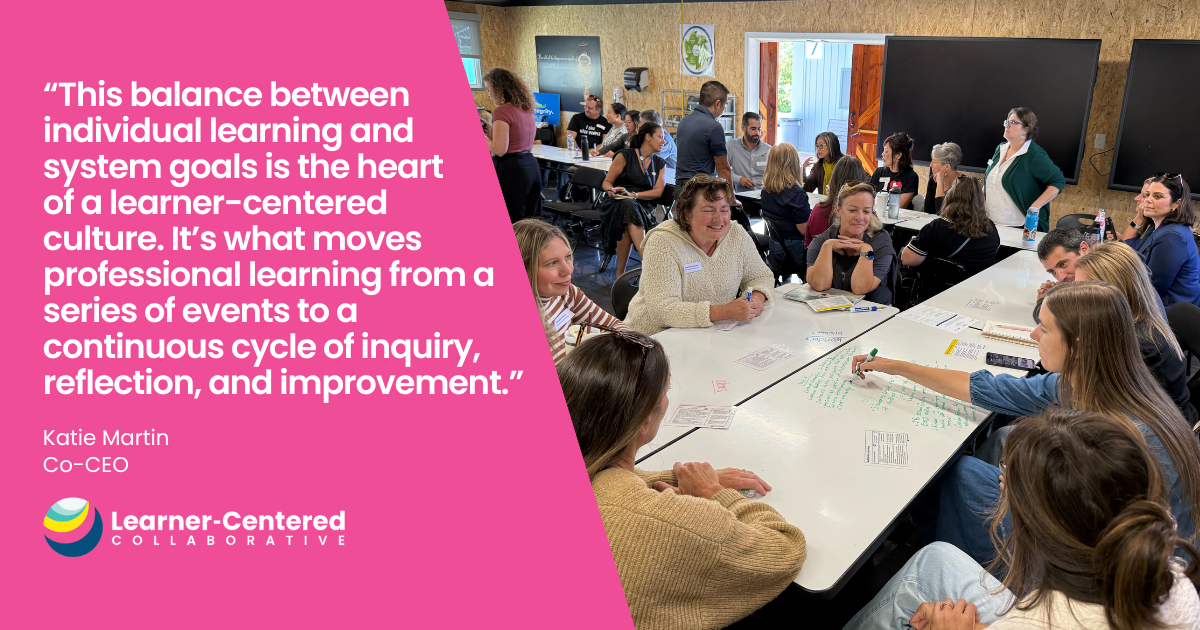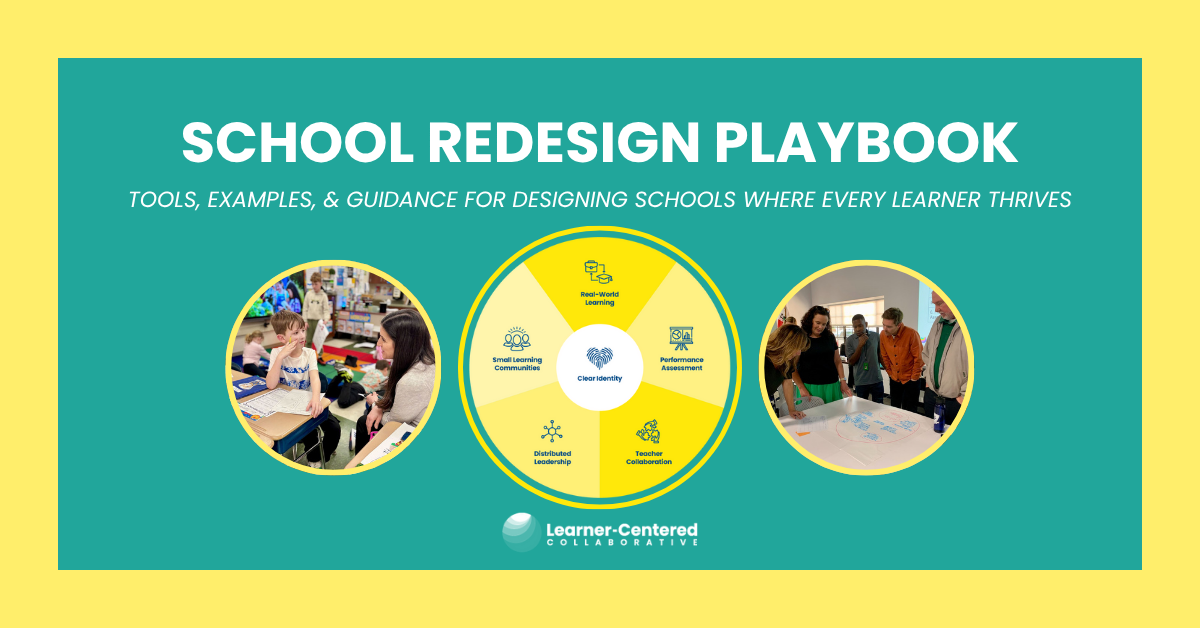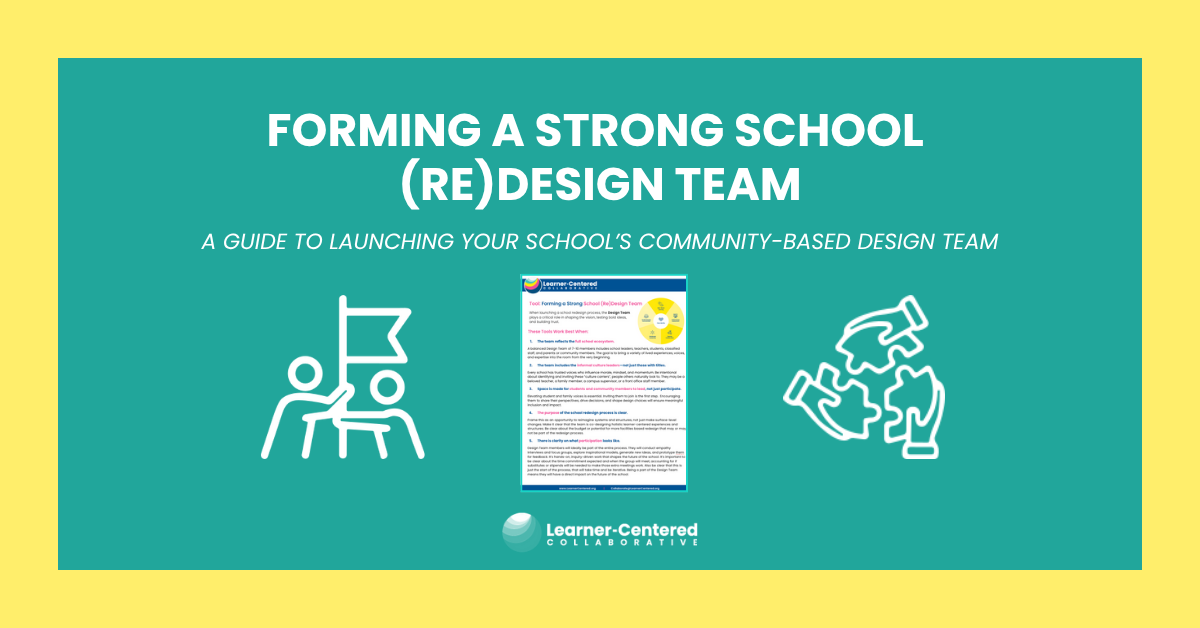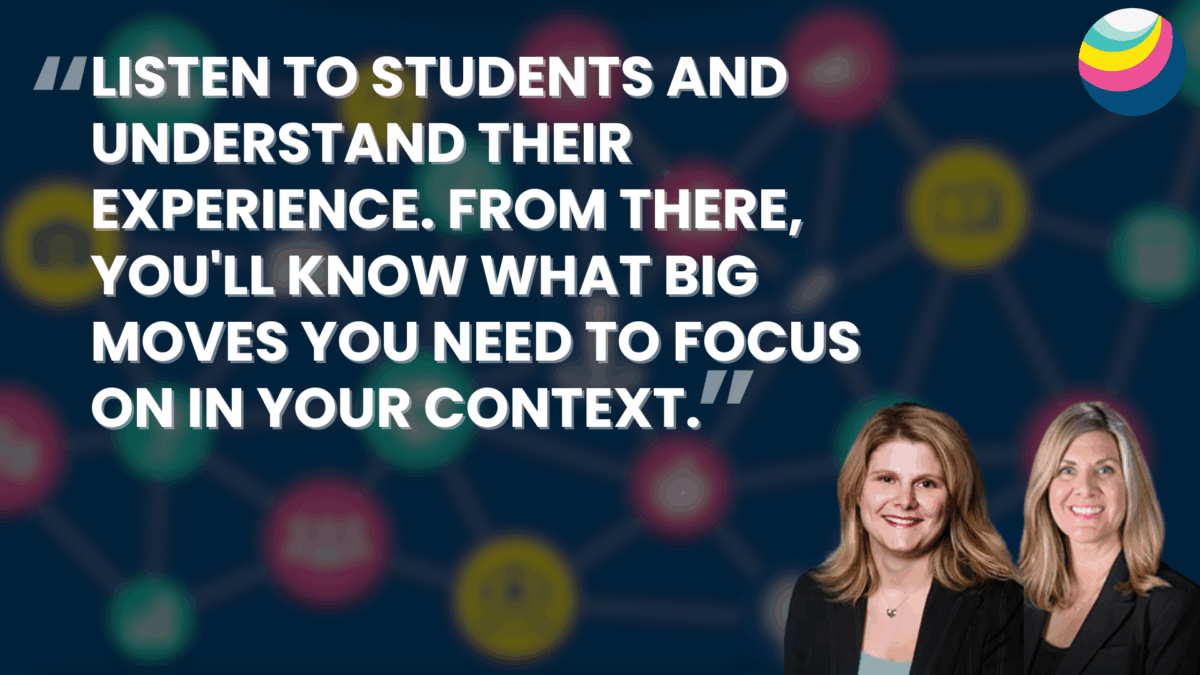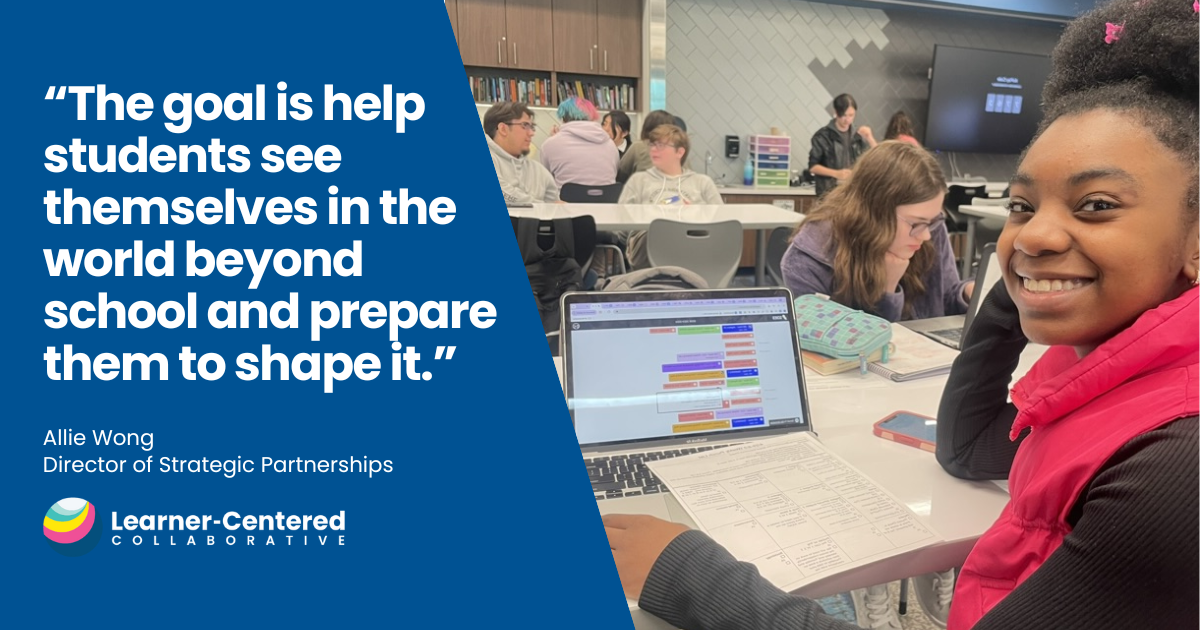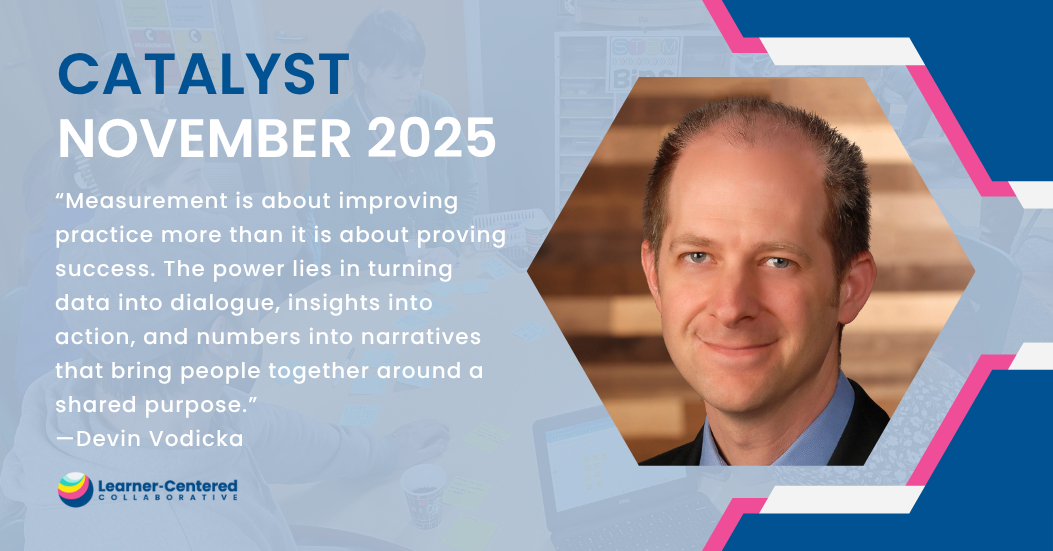Professional Learning Plan
Overview
A truly learner-centered school models the same principles for all learners, including educators. Developing a professional learning calendar and plan aligned with the Learning Model ensures that educators experience the agency, collaboration and authentic application they are fostering in their classrooms. By incorporating educator voice, practice-based professional learning and ongoing cycles of reflection, professional learning becomes meaningful, responsive and impactful.
This involves co-designing professional learning experiences with educators, leveraging qualitative and quantitative data on strengths and growth areas and creating structures that promote continuous learning. Through personalized coaching, collaborative inquiry and professional learning communities (PLCs), schools can cultivate a culture where teachers not only refine their practice but also take ownership of their professional growth– mirroring the learner-centered approach students experience in the classroom.
Bright Spots
Clarity and Coherence of Professional Learning Plans
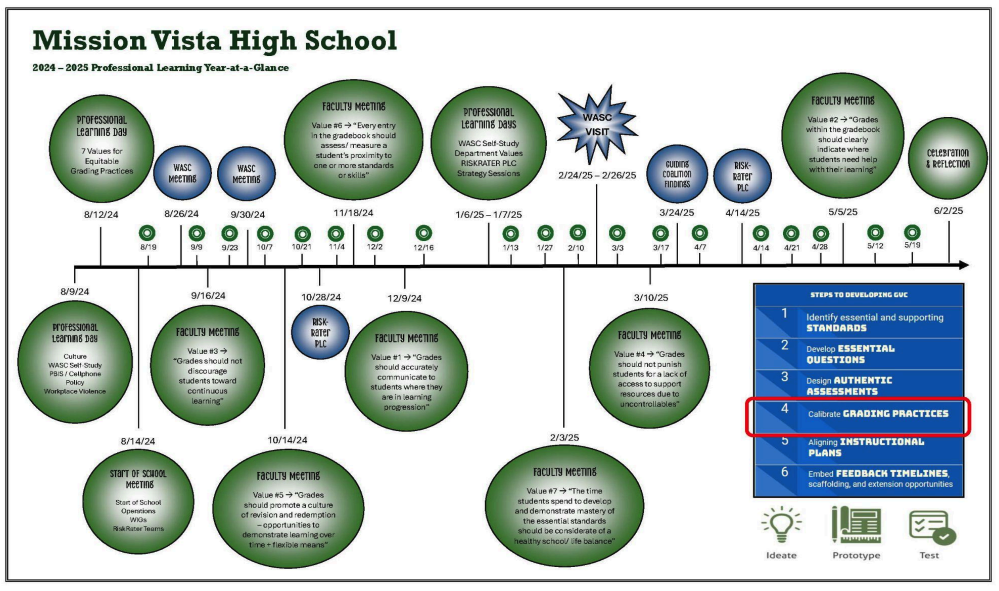
Mission Vista High School designed a visually engaging Professional Learning Calendar that clearly maps out their learning journey for the school year. Each small circle represents a PLC meeting, while the Faculty Meeting topics are intentionally aligned with the schools’ goal for the year– developing equitable grading practices. This thoughtful design ensures that professional learning is purposeful, cohesive and directly connected to improving student outcomes.
Teacher Co-Designed Professional Learning Aligned to Clear Goals
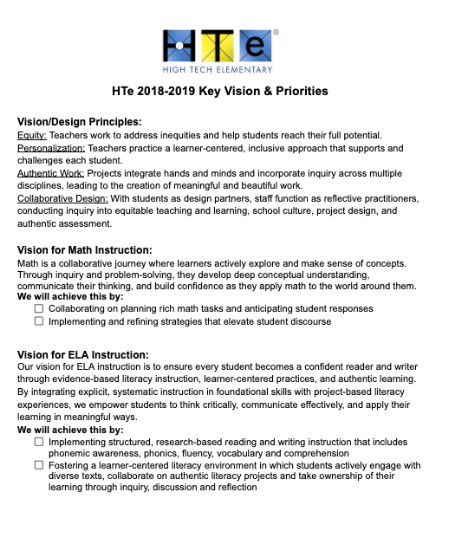
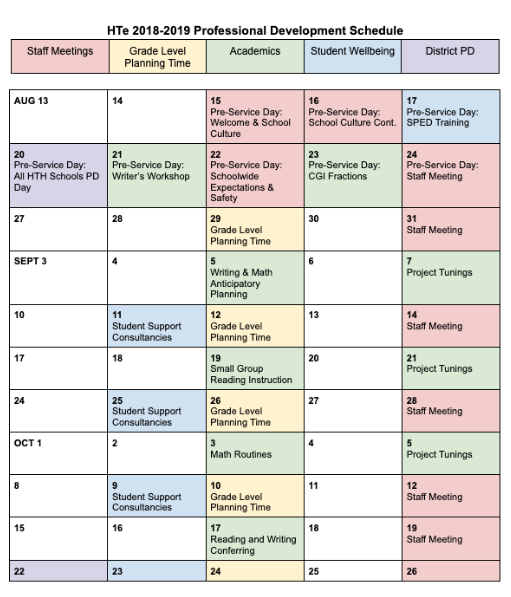
At High Tech Elementary, all teachers complete a survey at the end of each year reflecting on their personal strengths and areas for growth. This data is then used by a committee of teachers to shape the professional learning calendar for the year, ensuring that professional learning is meaningful and responsive to teacher needs. Another idea is to have teachers self-assess using the Learner-Centered Competencies Diagnostic, identify trends across the faculty and then plan professional learning based on the needs and interests of your team or allow educators to opt-into professional learning opportunities based on their strengths and growth areas.
Coherent Cycles of Learning
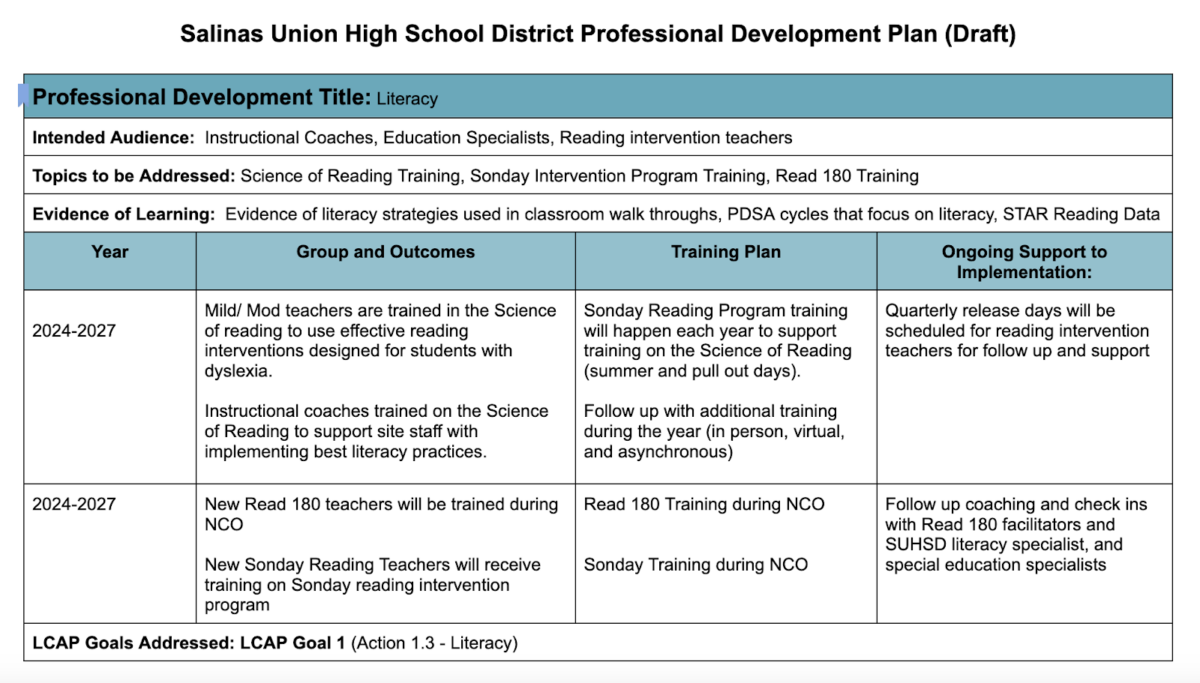
At Salinas Union High School, they have intentionally aligned multiple strands of professional learning cycles to their mission, vision and priorities. For each strand, such as literacy shown above, they have clear plans for multiple years with success metrics, plans around when the learning will happen and a follow up plan for ongoing support. This creates a coherent professional learning plan aligned to goals that doesn’t end after one day or experience. Read the full plan here.
Modeling Best Practices through Meeting Structures

At LCC, we believe that modeling a learner-centered approach with faculty will provide clarity and inspiration for implementing learner-centered practices with students. According to Dr. Katie Martin, “Teachers create what they experience.” This meeting template can help you think about how you might infuse learner-centered practices into your next meeting.
Learning Walks
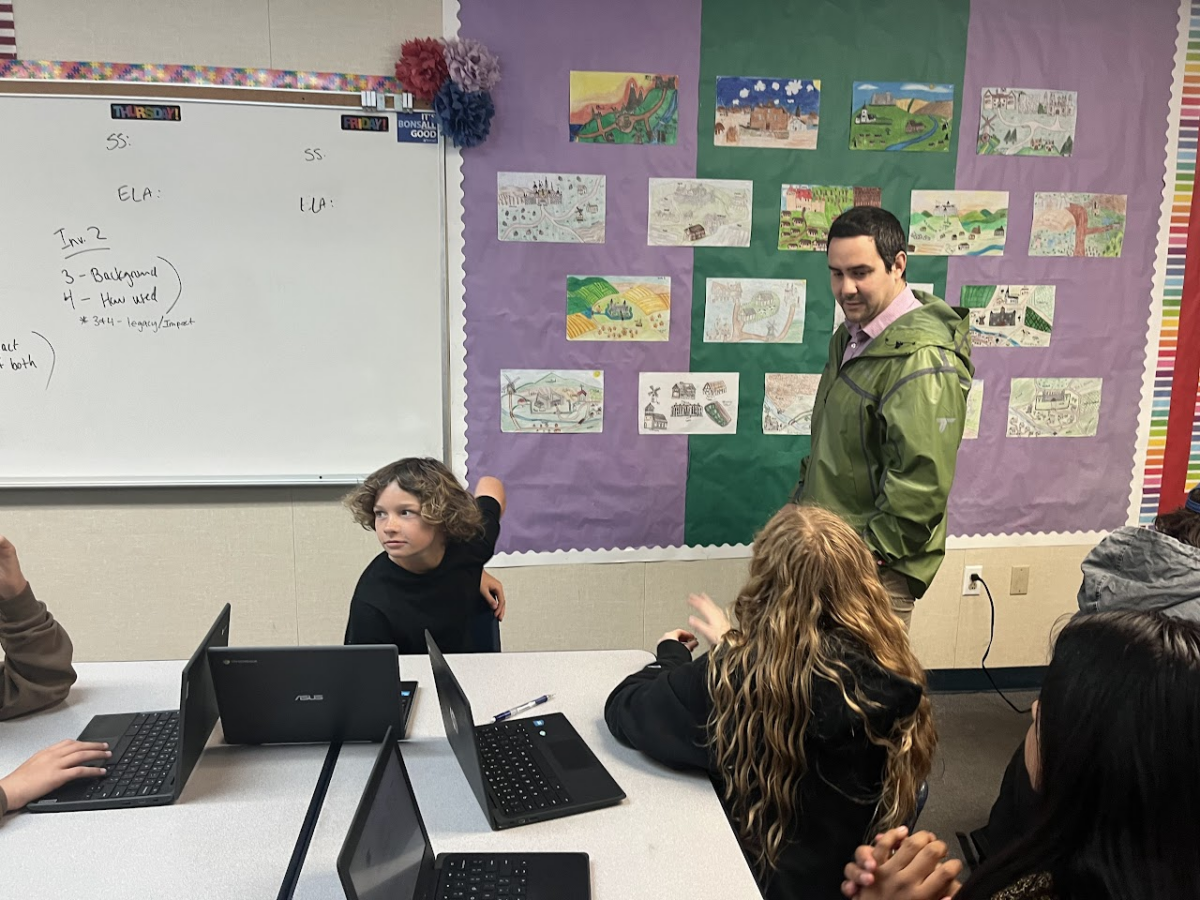
Learning walks are a collaborative process where educators observe classroom instruction with the goal of making teaching and learning practices visible. Rather than serving as evaluations, learning walks create opportunities for teachers and leaders to reflect, ask questions and engage in meaningful discussions about instructional strategies. By making learning public, schools foster a culture of shared growth, where educators learn from one another, identify best practices and continuously refine their practices.
Collaborative Planning Time
Collaborative planning time is a powerful tool for professional learning, giving teachers dedicated space to reflect, share ideas and co-design instruction that meets student needs. When educators engage in purposeful collaboration, they analyze student work, discuss instructional strategies and refine lessons in real time, leading to more effective and responsive teaching. This time fosters a culture of continuous learning, allowing teachers to learn from one another, experiment with new approaches and align their practices with learner-centered principles. By prioritizing collaborative planning, schools empower educators to grow together, ultimately enhancing student engagement and achievement.
Questions to Consider:
- How does our professional learning plan align with our learner-centered vision and instructional model?
- How might we shift professional learning structures to be more authentic, personalized, competency-based, and/or inclusive and equitable?
- How can you leverage the structures and supports that are already in place to facilitate ongoing, practice-oriented professional learning?
- How do we create a culture where professional learning is continuous, reflective and empowering?
- What opportunities exist for teachers to learn from and with one another in meaningful ways?
